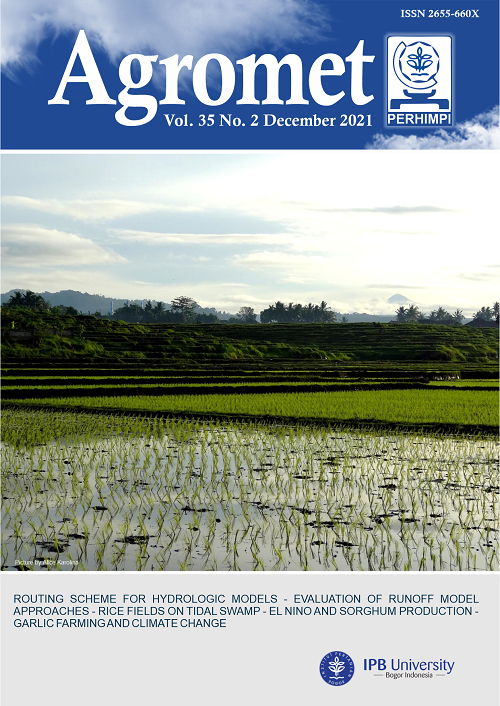Adaptive Garlic Farming to Climate Change and Variability in Lombok
Abstract
Climate change impact in Indonesia is generally characterized by changes in daily temperature, rainfall patterns, and sea level rise. These changes mainly influence agricultural practices for various crops, including garlic (Alium sativum L.). Current knowledge on climate vulnerability related to agricultural impact in Indonesia is limited. This study aims to identify the level of vulnerability of garlic farmer households to climate change and provide recommendations for adaptation activities for garlic farmers. The household vulnerability profile was assessed using Livelihood Vulnerability Index (LVI) and LVI-IPCC approaches. We carried out interviews for 100 respondents in four villages in Lombok to obtain primary data related to agricultural practices. Relation between climate variables and garlic productivity was determined using linear regression approach. The results showed that rainfall and temperature had a negative correlation with garlic productivity as indicated statistical indicators used, namely R2. According to LVI and LVI-IPCC approach, Sembalun Timba Gading and Sajang have the highest level of vulnerability (0.60) and Sajang Village has the lowest level of vulnerability (0.55) among all villages. The findings suggested that climate information should be considered in agricultural sector for climate change mitigation and adaptation.
Authors

This work is licensed under a Creative Commons Attribution-NonCommercial 4.0 International License.

